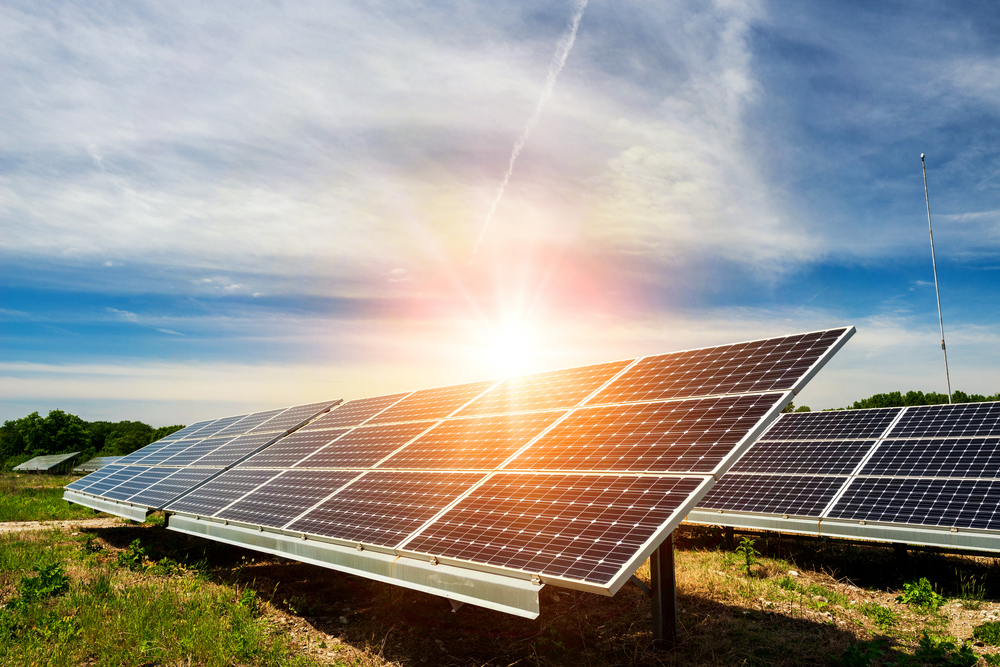Solar panel size plays an important role if you have an unusually shaped roof or a rather small one. With a large roof, you can buy larger panels at a lower costs per panel. This will help you achieve your target for energy output. However, if the usable roof area is limited or if it is partially shaded, you must get the right size of solar panels as that is the best way to generate more solar power over a long period of time. This will also help you save money. The energy produced is generally expressed in kilowatts, wherein, 1kw solar panel size (1 kW) is equivalent to 1000 Watts.
Typically, solar panel dimensions are about 65 by 39 inches or 5.4 by 3.25 feet. These dimensions have remained the same for decades, but the output and efficiency from the same footprint have changed for the better. Solar panel dimensions are dependent on the wattage of panel. Higher the wattage, greater the panel size.

The solar panel system’s size is the first thing to consider when searching for or buying a solar panel system for your home. This is because it is the size of the solar panels and not the efficiency that largely determines the amount of solar power that will be generated.
Before sizing a solar panel system, it is important to figure out the important constraints on the project and use these obstacles as a starting point for deciding the design. Then, you can choose to approach the solar panel installation from one of the three angles:
- The offset of energy: Choose a system that offsets a specific percentage of your energy usage.
- Space-related constraints: Space efficiency is vital in solar panel installations, and this is where the solar panel size comes in.
- Budget: Choose a solar panel system that best suits your budget.
Some other important solar panel sizing factors include:
- The level of exposure to the sun in your location
- The orientation of the tilt angle
- Future expansion plans (If any)
- Efficiency ratings
- Performance over the warranty life
Suppose your use of solar power provides a more suitable net metering policy. In that case, the energy your system generates can be banked with utility in the form of credit, which can be used later. Now, once you have assessed your solar energy needs and established an approach toward its design, here is how you can size the solar panel system;
Calculate your usage in kWh
Find your kilowatt-hour usage from the electric bill. Here, it is essential to have a complete record of 12 months of use to look at the peaks and valleys in the usage over the time span of a year.
Look at the peak hours of sunlight
The average hours of peak sunlight vary hugely depending on your location and the climate of your area. Therefore, you’ll also want to determine the peak sunlight hours to make the most of solar power.
Calculate the size of the solar panel system
To determine the size of the solar panel system, you must take the daily energy requirement in kWh and divide it by the peak sunlight hours to get the kW output.
Now, divide this output in kilowatts with the panel’s efficiency to estimate the number of solar panels needed for the system.
(Daily kWh usage/ average hours of peak sunlight) x 1.15 efficiency factor = size of the DC solar panel system)
To make the solar panel system size estimation as accurate as possible, it is also important to consider the needed roof mount type, the direction in which the solar panels will face, and the right size of panels to fit your roof the best.
For example, if your roof has a flat surface, you can position the solar panels in south direction to maximize the exposure to the sun, unlike an inclined roof.
With Luminous, find the most suitable solar panel size for your roof and fulfill your daily energy requirements. At Luminous, we ensure you invest in the best solar panel system which works best within your budget, energy offset.
Leave a Reply